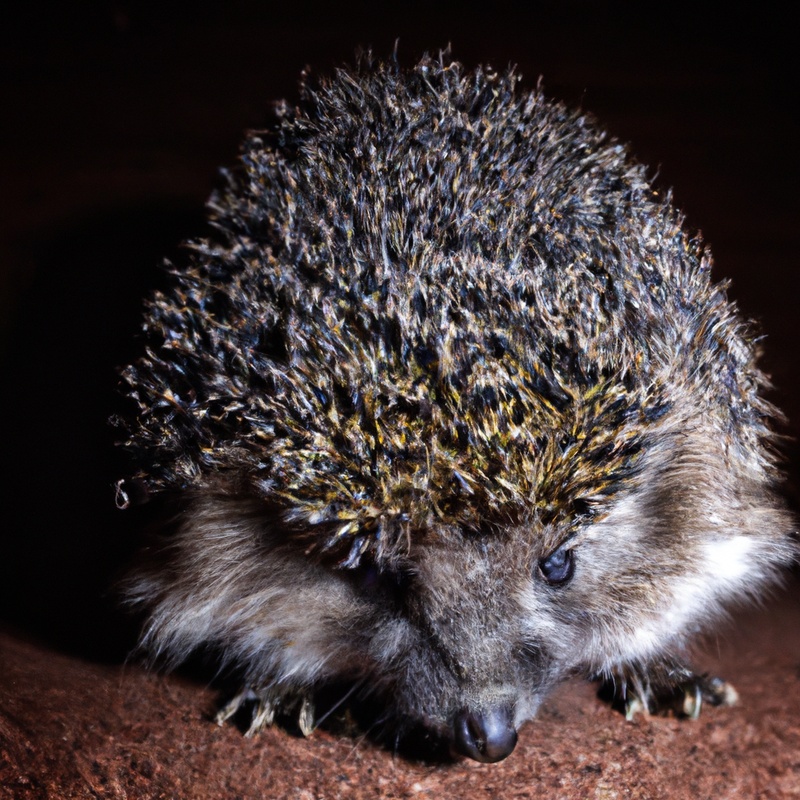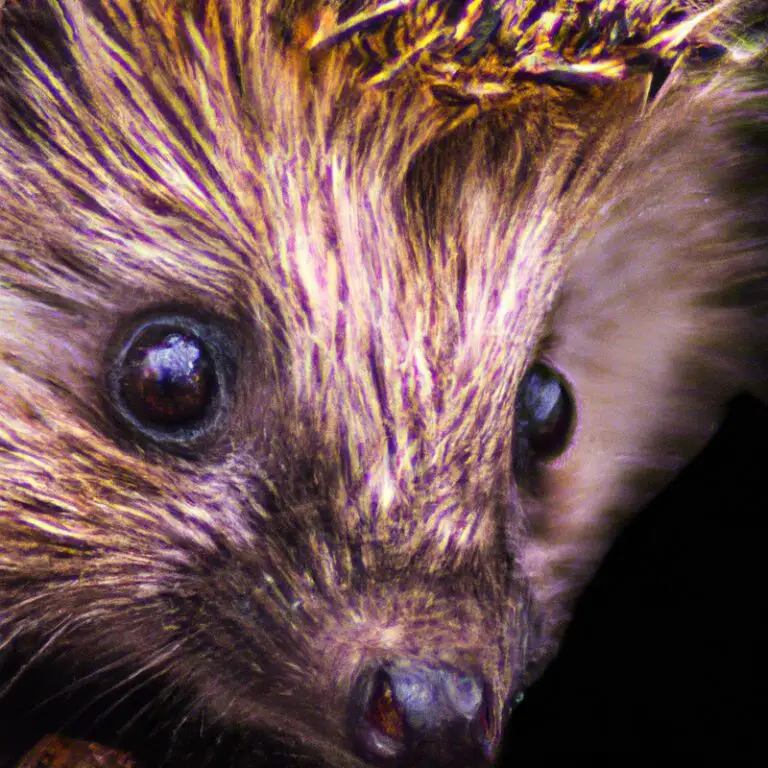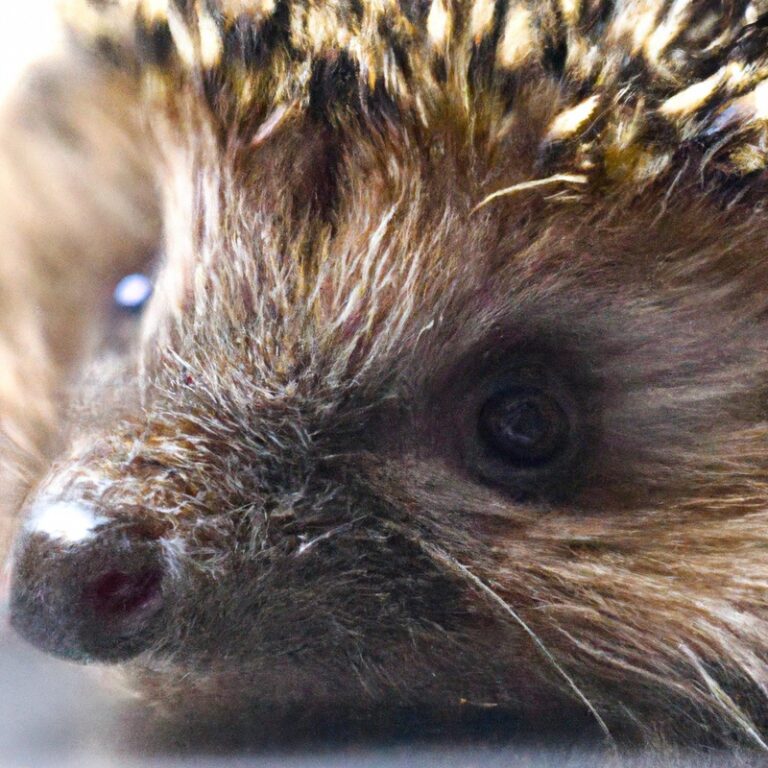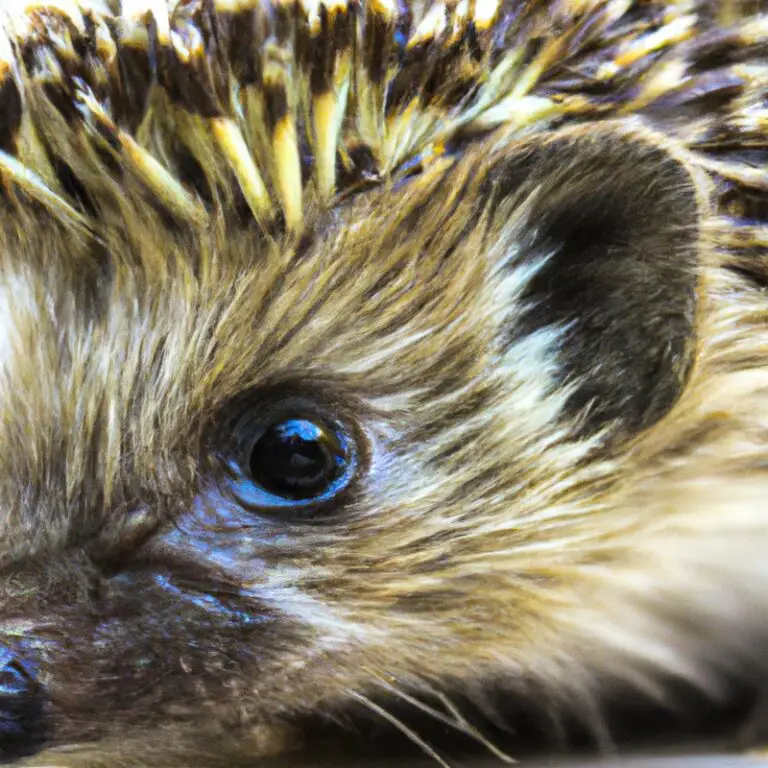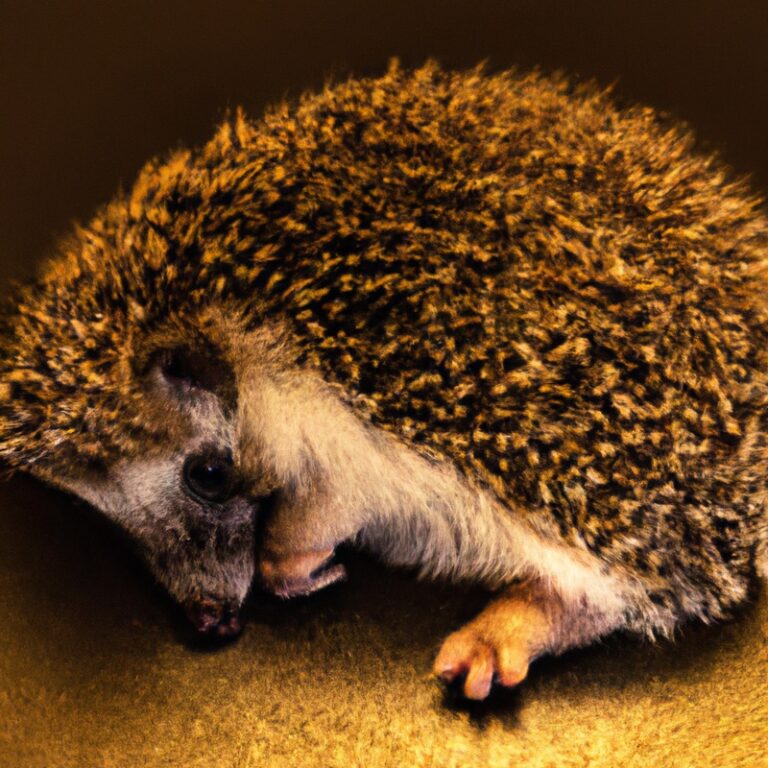How Do Hedgehogs Use Their Senses To Navigate?
Key Takeaways:
- Hedgehogs primarily use their sense of smell to navigate their environment.
- Hedgehogs have poor eyesight but use their hearing to detect potential threats.
- Hedgehogs rely on their whiskers to gauge the size and shape of objects in their path.
- Hedgehogs have an acute sense of touch that helps them navigate obstacles and find food.
Ever wondered how hedgehogs manage to navigate through their prickly surroundings with such ease?
These adorable creatures may not have the best eyesight, but they possess an amazing array of senses that help them maneuver through their environment effortlessly.
In this article, we’ll delve into the fascinating world of hedgehog senses and explore how they use their eyes, ears, nose, touch, and taste to navigate their way through the world.
We’ll also debunk some common myths and answer frequently asked questions about these intriguing little creatures.
So, hold onto your quills, as we embark on a journey into the sensory world of hedgehogs!
| Navigation Method | Description | |
| 1 | Sense of Smell | Hedgehogs have a keen sense of smell, which they use to detect food sources and navigate their environment. |
| 2 | Hearing | They have excellent hearing, which helps them locate potential threats or predators and navigate through sound cues. |
| 3 | Vibrissae (Whiskers) | Hedgehogs use their long, bristly whiskers to feel their surroundings and navigate through tight spaces. |
| 4 | Sense of Touch | They have sensitive skin and use their sense of touch to feel the texture of different surfaces and navigate accordingly. |
| 5 | Visual Perception | Although not as strong as their other senses, hedgehogs still rely on their vision to navigate and identify objects or landmarks in their surroundings. |
Hedgehog Sight and Navigation
Hedgehog Sight and Navigation: Exploring how hedgehogs use their senses to navigate their surroundings.
Anatomy of hedgehog eyes
Hedgehogs have small, but remarkable eyes.
Their eyes are located on the sides of their heads, providing them with a wide field of vision to detect potential dangers in their surroundings.
Despite their small size, hedgehog eyes are well-adapted for low light conditions, making them proficient at night-time hunting.
Additionally, hedgehog eyes possess a highly reflective layer called the tapetum lucidum, which enhances their ability to see in dim lighting.
This reflection gives their eyes a characteristic glowing appearance at night.
How hedgehogs use their eyes for navigation
Hedgehogs use their eyes for navigation by relying on their ability to detect light and shadows. They are nocturnal creatures, so their eyes are adapted to low light conditions.
By observing changes in light intensity, they can determine the presence of objects or obstacles in their path.
Their eyes also help them in assessing distance and depth perception. Additionally, hedgehogs have a keen sense of smell and hearing, which further aids their navigation skills.
Overall, their eyes play a crucial role in helping them navigate their surroundings in search of food and safe shelter.
Limitations of hedgehog sight
Hedgehogs have limitations when it comes to their sight.
First, they have poor vision in bright light and rely more on their other senses.
Second, their eyes are relatively small, making it harder for them to see details.
Third, the positioning of their eyes on the side of their head limits their depth perception.
Overall, hedgehogs rely more on their sense of smell and hearing to navigate their environment.
Hedgehog Hearing and Navigation
Hedgehogs rely on their keen sense of hearing to navigate their surroundings effectively.
Structure of hedgehog ears
The structure of hedgehog ears is quite fascinating. Hedgehogs have small and prominent ears which are located on the sides of their head.
The ear shape can vary depending on the species of hedgehog, but they all serve the same purpose.
Hedgehogs have excellent hearing, and their ears are designed to help them detect sounds from all directions. They have a complex inner ear structure that allows them to pick up on high-frequency sounds and navigate their surroundings effectively.
The external part of their ears, known as the pinna, helps to collect and funnel sound into their ear canal.
Inside the ear, they have a well-developed cochlea, which is responsible for translating sound into signals that the hedgehog’s brain can understand. This intricate structure allows hedgehogs to navigate their environment, locate prey, and communicate with each other effectively.
How hedgehogs use their hearing for navigation
Hedgehogs use their highly sensitive hearing to navigate their surroundings. Their ears can pick up on subtle sounds like rustling leaves or the movement of prey.
By relying on their acute hearing, hedgehogs can locate sources of food, potential dangers, and even find their way back home.
This sharp sense of hearing allows them to navigate and survive in their environment with remarkable accuracy.
The role of sounds in hedgehog navigation
Hedgehogs use sounds to navigate their surroundings.
They rely on their keen hearing to detect various auditory cues, such as rustling leaves or the movement of prey.
By interpreting these sounds, hedgehogs can navigate safely, avoiding potential dangers.
Their ability to perceive sounds allows them to distinguish between different objects and assess their proximity.
This helps them navigate through their environment and find food or suitable shelter.
Hedgehogs’ reliance on sounds highlights the importance of their hearing in their navigation abilities.
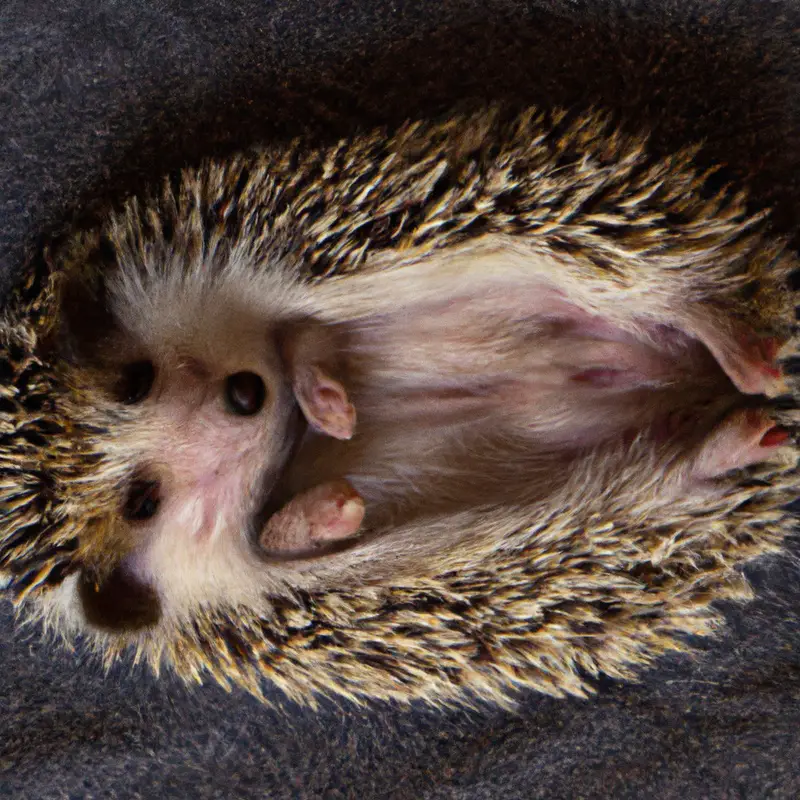
Hedgehog Smell and Navigation
Hedgehogs rely on their sense of smell to navigate their surroundings, detect food, and identify potential predators. The hedgehog olfactory system plays a key role in their navigation abilities.
Hedgehog olfactory system
The hedgehog olfactory system is an essential tool for these small mammals to navigate their surroundings.
They have a keen sense of smell, allowing them to detect food, potential predators, and even find a mate.
Their sense of smell is so advanced that they can even locate insects and other prey underground.
Hedgehogs use their nose to gather information about their environment and make decisions based on the scent cues they receive.
It plays a crucial role in their survival and overall well-being.
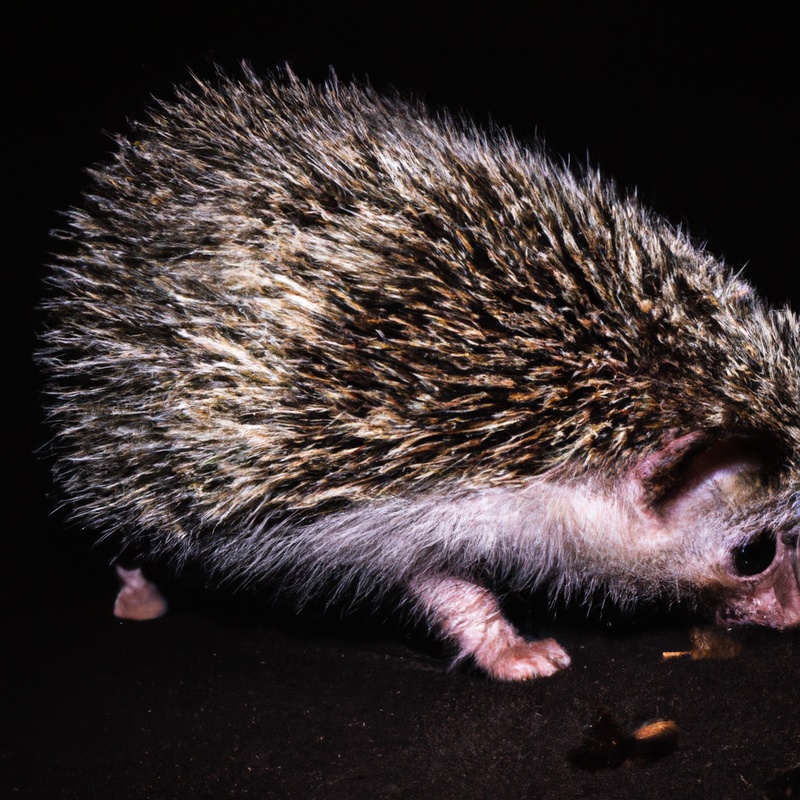
How hedgehogs use smell to navigate
Hedgehogs use smell to navigate by relying on their keen sense of scent. They have a strong sense of smell, which allows them to detect and follow different odors in their environment.
Hedgehogs can use smell to find food, locate potential mates, and even find their way back to their burrows.
Their sense of smell helps them identify familiar scents and navigate their surroundings, even in the dark. This ability to rely on smell is essential for hedgehogs to navigate effectively and survive in their natural habitats.
How hedgehogs detect food and predators through smell
Hedgehogs detect food and predators through their keen sense of smell. This sense allows them to locate insects, worms, fruits, and other sources of food in their environment.
They can detect the scent of these food sources from a distance, even when hidden under leaves or in the ground.
Similarly, hedgehogs rely on their sense of smell to detect predators nearby and avoid potential danger. This ability to use smell for navigation is essential to their survival in the wild.
Hedgehog Touch and Navigation
Hedgehogs rely on their spines and sense of touch to navigate their surroundings and find their way. They use touch to navigate obstacles and communicate with other hedgehogs.
Sensitivity of hedgehog spines
Hedgehog spines are surprisingly sensitive and play an important role in their navigation. These spines, known as quills, are filled with sensors that allow hedgehogs to detect changes in their environment.
By relying on their spines, hedgehogs can feel the texture of surfaces, detect vibrations, and even sense the proximity of objects.
This sensitivity helps them navigate without relying solely on their sight or hearing. It’s fascinating how hedgehogs use their spines as a valuable tool for navigation!
How hedgehogs use touch to navigate
Hedgehogs use their sense of touch to navigate their surroundings.
They have a thick coat of spines on their back, which helps protect them from predators, but it also serves as an important tool for sensing their environment.
The spines are connected to muscles, allowing hedgehogs to move them and detect changes in their surroundings.
By brushing their spines against objects, they can gather information about the shape, texture, and size of their surroundings.
This helps them navigate and find their way around, even in the dark.
Their sense of touch is crucial for hedgehogs, allowing them to explore and survive in their habitat.
The role of touch in hedgehog social interactions
Hedgehogs rely on touch to navigate their social interactions. They use their quills to communicate boundaries and register physical contact with other hedgehogs.
Touch plays a significant role in establishing dominance, mating, and even in the recognition of familiar individuals.
Hedgehogs have sensitive snouts, allowing them to explore their environment and detect scents. Through touch, hedgehogs build connections and establish their place in the social hierarchy.
Hedgehog Taste and Navigation
Hedgehogs use taste to navigate and differentiate between safe and dangerous foods.
Hedgehog taste buds
Hedgehogs have taste buds, just like humans. However, their taste buds are not as developed as ours.
They have a limited sense of taste and are not very discriminating when it comes to flavors.
Hedgehogs mostly rely on their sense of smell to find food. Their taste buds help them detect bitter or toxic substances, enabling them to avoid potentially harmful food.
Hedgehogs may be more interested in the texture and smell of their food rather than its taste.
How hedgehogs use taste to navigate
Hedgehogs use taste primarily to navigate by exploring their surroundings and finding food sources. Their tongues are sensitive to different tastes, allowing them to identify edible items.
By sampling the taste of objects, they can determine their suitability for consuming and navigate towards potential food sources.
For instance, they can detect the presence of insects or other small creatures through taste, guiding them to their next meal. This remarkable ability helps hedgehogs survive and thrive in their environments.
How hedgehogs differentiate between safe and dangerous foods
Hedgehogs differentiate between safe and dangerous foods primarily through their sense of smell. They have a highly developed olfactory system that allows them to detect potential dangers like toxins or spoiled food.
Hedgehogs are cautious eaters and will often sniff their food before consuming it.
They rely on their senses to determine if something is safe to eat, which helps them avoid ingesting harmful substances. It’s remarkable how their sense of smell plays a crucial role in their food selection process.
Frequently Asked Questions
Can hedgehogs see in the dark?
Hedgehogs indeed have impressive night vision. They are crepuscular creatures, which means they are most active during twilight hours.
Hedgehogs have a high number of rod cells in their eyes, which are specialized for low-light conditions.
This allows them to navigate and forage for food in the darkness without relying heavily on light. In addition to their excellent night vision, hedgehogs also rely on their sense of hearing and smell to explore their surroundings.
Their well-developed senses help them navigate effectively even in the absence of daylight.
Can hedgehogs hear well?
Hedgehogs have a good sense of hearing.
They rely on their ears to detect sounds in their environment.
Hedgehogs can hear a wide range of frequencies, which helps them locate prey, find potential mates, and avoid predators.
Their acute hearing allows them to navigate their surroundings and stay safe.
Why do hedgehogs curl up when threatened?
When threatened, hedgehogs curl up as a defense mechanism. This behavior is known as “balling up.” By tucking their head and limbs under their spines, hedgehogs create a protective barrier.
This curled-up position makes it difficult for predators to harm them.
Hedgehogs have a unique ability to curl up due to the impressive number of spines covering their body. This instinctive response helps hedgehogs to stay safe in the wild.
How do hedgehogs find their way back home?
Hedgehogs have an incredible sense of hearing and smell that they use to find their way back home. They rely on their acute hearing to detect familiar sounds and navigate their surroundings.
Additionally, hedgehogs have a strong sense of smell, which helps them recognize scents and follow their own scent trail back to their den.
These sensory abilities enable hedgehogs to confidently locate their way back home.
Final Verdict
Hedgehogs rely on their senses to navigate their surroundings.
Through their eyes, hedgehogs can detect movement and perceive their environment.
Their ears allow them to hear sounds and locate potential threats or resources.
Hedgehogs have a keen sense of smell, which they use to navigate, find food, and detect predators.
Their sense of touch helps them navigate tricky terrain and engage in social interactions.
While taste plays a smaller role in navigation, hedgehogs can differentiate between safe and dangerous foods.
Overall, hedgehogs have developed a comprehensive sensory system that aids them in their navigation and survival in their natural habitats.

